Warlord Games

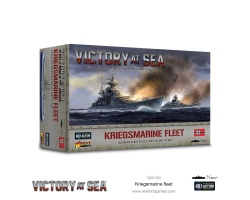
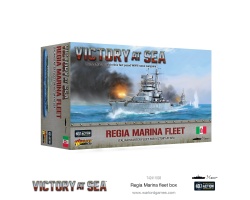
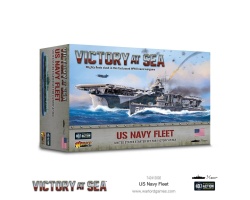


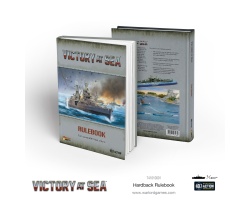
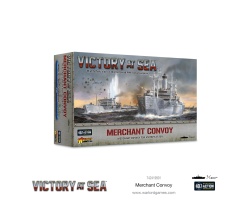

Compared to a German Type VII C submarine, the Marcello-class were much larger, displacing 1,060 tons versus 769. Speed and range between the two classes were almost similar, but the Marcello-class had more torpedo tubes than the famous U-Boat. The Marcello-class should be considered one of the most successful produced by the Italian shipyards and showed very good qualities, being fast, structurally robust and relatively manoeuvrable.
MTBs:
Capable of 45 knots, the Italian Motoscafo Armato Silurante (Armed Torpedo Boat) or MAS Boats were extremely active in the Mediterranean theatre. Though they were not well suited to rougher seas, they still achieved a great deal of note, including the torpedoing of HMS Capetown and an attack on the harbour of Malta, though the latter was a failure that cost two MAS Boats. Based on German S1 class S-Boats the Italians found in the port of Cattaro in Yugoslavia, the MS Boat was larger and far more seaworthy than the MAS designs. Though not as fast, it was far better suited to long-range patrols in the Mediterranean being more stable and more comfortable. It was an MS Boat that sank the largest vessel of any MTB in the war, HMS Manchester, in 1942.
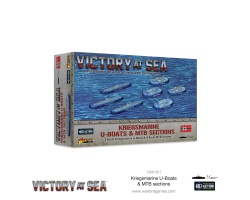
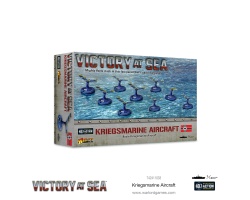
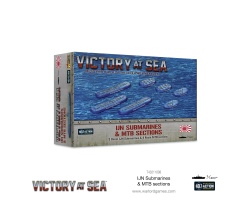
The Kaidai-7-class, or KD-7, was developed in the late 1930s, following on from the preceding KD-6 class. With a surface range of 8,000nm at 16kts, and a submerged endurance of 50nm at 5kts, they possessed a slightly better underwater performance to the late-model KD-6s and better surface speed (though not range) than the earlier members of that class. All members of the class were lost by mid-1944. Another ocean-going submersible using 533mm forward and aft torpedo tubes, it served in the South Pacific as well as the waters off Australia. I-177 sunk the hospital ship AHS Centaur off Stradbroke Island. It was presumed lost with all hands on 18 November 1944, while the I-176 was lost six months earlier off of the Solomon's. There were 10 KD-7 submarines built overall.
MTBs:
Designed as a suicide craft, the Shin'yo either carried a powerful explosive or two depth charges. The depth charges were intended to be planted by the pilot of the boat, after which he would then make his escape. Although nearly 10,000 were built, they accounted for the sinking of only 5 ships, mainly landing craft. The Imperial Japanese Navy fielded a number of variants on a standard torpedo boat design, differing mainly in machinery fit which affected displacement, giving the illusion of more variety than existed in practice. 238 boats were built within these designations, all armed with two 18-inch torpedoes and 25mm or 13.2mm guns.
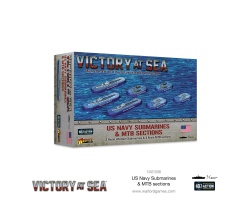
Submarines:
The Gato-class of submarine was the first mass production US submarine class of the Second World War, forming the majority of the United States Navy's submarine fleet of the war. It was the Gato-class, and the successors of her design that were largely responsible for the disruption of the Japanese merchant fleet. Individual Gato-class vessels were given names of marine creatures, with the lead of her class named for a type of small catshark.
MTBs:
The Elco mounted four torpedo tubes which, combined with its speed, made it a serious threat to larger ships. The largest PT boat used by the US Navy, the Elco is also notable for future President Kennedy commanding one. Crews of these boats relied on their smaller size, speed and manoeuvrability - and darkness - to survive.
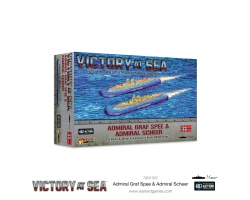
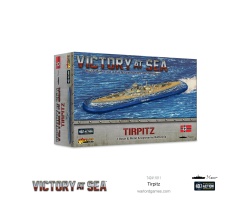
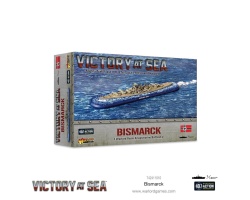
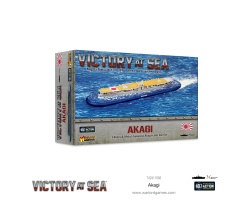



- Scharnhorst-class Battleship - Scharnhorst 1939
- Admiral Hipper -class cruiser - Blucher 1940
- Admiral Hipper -class cruiser - Prinz Eugen 1940
- Admiral Hipper-class cruiser - Admiral Hipper 1939
- Konigsberg -class cruiser - Koln 1941
- Konigsberg -class cruiser - Konigsberg 1940
- Type 1936A-class Destroyer x3
- Dive Bomber Aircraft - Junker Ju-87 Stuka flight x4 flights
- Ship Cards and Damage Sliders
- Assembly Instructions
Please Note:
Miniatures are supplied unpainted and some assembly will be required.
- Aquila-class Carrier - Aquila
- Conte di Cavour-class Battleship - Conte di Cavour 1940
- Etna-class cruiser - Etna 1942
- Zara-class cruiser - Pola 1940
- Luigi Cadorna-class cruiser - Luigi Cadorna 1940
- Navigatori-class Destroyer x3
- Torpedo-Bomber Aircraft ? Reggiane RE.2001 Falco II x4 flights
- Ship Cards and Damage Sliders
- Assembly Instructions
One Regia Marina Fleet Box supplied.
Miniatures supplied unpainted and some assembly may be required.
- New Mexico-class Battleship - USS New Mexico 1941-42
- Essex class Carrier - USS Essex 1944
- Northampton-class Cruiser - USS Houston 1940
- Northampton -class Cruiser - USS Chester 1941
- Portland-class Cruiser - USS Portland 1942
- Clemson-class Destroyer x3
- Fighter Bomber Aircraft - F4-U Corsair x4 flights
- Ship Cards and Damage Sliders
- Assembly Instructions
Please Note:
Miniatures are supplied unpainted and some assembly will be required.
- A4 Battle of the Pacific Rules manual
- Die-cut game tokens sheet
- 15 Warlord Resin model ships:
- USS Indianapolis 1944
- USS Northampton 1942
- USS Chicago 1942
- Mogami 1939
- Kumano 1944
- Furutaka 1939
- Fubuki-class Destroyer x3
- Fletcher-class Destroyer x 6
- Ship Cards and damage sliders x 15
- Ten-sided dice x 4
- Six-sided dice x 12
- A0 Sea Mat x2
Miniatures are supplied unpainted and some assembly will be required.
1x Mozhayski Class Fleet Carrier
2x Khatanga Class Cruisers
Each Cruiser can alternatively be built as either a Morosko or Pravda Class
2x Stoletov Class Ekranoplan
4x SRS Tokens
Please note:
Miniatures are supplied unpainted and some assembly will be required.
Unit Cards are not included and can be found on the Dystopian Wars website.
- The complete rules for fighting naval battles, including the use of aircraft, submersibles and coastal defences.
- Detailed background notes on the progression of naval warfare through WWII.
- 28 historic scenarios, covering every theatre over the span of the whole war.
- Exhaustive fleet lists for all the major belligerents, providing game statistics for hundreds of unique ships, submarines, aircraft and MTBs.
3 x Liberty Merchant Ship
3 x Victory Merchant Ship
1 x SS Ohio Tanker Ship
Ship Cards and Damage Sliders
Please Note: One Merchant Convoy supplied. Miniatures supplied unpainted and some assembly may be required.
- Marcello-class Submarines x 3
- MAS MTB sections x 2
- MS MTB sections x2
- Ship Cards
Please Note:
One Regia Marina Submarines and MTB Sections supplied.
Miniatures supplied unpainted and some assembly may be required.
Compared to a German Type VII C submarine, the Marcello-class were much larger, displacing 1,060 tons versus 769. Speed and range between the two classes were almost similar, but the Marcello-class had more torpedo tubes than the famous U-Boat. The Marcello-class should be considered one of the most successful produced by the Italian shipyards and showed very good qualities, being fast, structurally robust and relatively manoeuvrable.
MTBs:
Capable of 45 knots, the Italian Motoscafo Armato Silurante (Armed Torpedo Boat) or MAS Boats were extremely active in the Mediterranean theatre. Though they were not well suited to rougher seas, they still achieved a great deal of note, including the torpedoing of HMS Capetown and an attack on the harbour of Malta, though the latter was a failure that cost two MAS Boats. Based on German S1 class S-Boats the Italians found in the port of Cattaro in Yugoslavia, the MS Boat was larger and far more seaworthy than the MAS designs. Though not as fast, it was far better suited to long-range patrols in the Mediterranean being more stable and more comfortable. It was an MS Boat that sank the largest vessel of any MTB in the war, HMS Manchester, in 1942.
3x Type IX U-Boats
2x S-100 S-Boat Sections
2x R-Boat Sections
Ship Cards
Please note:
Miniatures are supplied unpainted and some assembly may be required.
- 1 x Focke-Wulf FW 200 Condor bomber
- 4 x Junkers Ju 88 fighter/bombers
- 4 x Messerschmitt Bf109 fighters
Please Note:
One Kriegsmarine Aircraft set supplied.
Miniatures supplied unpainted and some assembly may be required.
- 3x Kaidai-7-class Submarines
- 2x Shin'yo Kamikaze Boat Sections
- 2x T-14 MTB Sections
- Ship Cards
Please note:
Miniatures are supplied unpainted and some assembly may be required.
The Kaidai-7-class, or KD-7, was developed in the late 1930s, following on from the preceding KD-6 class. With a surface range of 8,000nm at 16kts, and a submerged endurance of 50nm at 5kts, they possessed a slightly better underwater performance to the late-model KD-6s and better surface speed (though not range) than the earlier members of that class. All members of the class were lost by mid-1944. Another ocean-going submersible using 533mm forward and aft torpedo tubes, it served in the South Pacific as well as the waters off Australia. I-177 sunk the hospital ship AHS Centaur off Stradbroke Island. It was presumed lost with all hands on 18 November 1944, while the I-176 was lost six months earlier off of the Solomon's. There were 10 KD-7 submarines built overall.
MTBs:
Designed as a suicide craft, the Shin'yo either carried a powerful explosive or two depth charges. The depth charges were intended to be planted by the pilot of the boat, after which he would then make his escape. Although nearly 10,000 were built, they accounted for the sinking of only 5 ships, mainly landing craft. The Imperial Japanese Navy fielded a number of variants on a standard torpedo boat design, differing mainly in machinery fit which affected displacement, giving the illusion of more variety than existed in practice. 238 boats were built within these designations, all armed with two 18-inch torpedoes and 25mm or 13.2mm guns.
- 3x Gato-Class Submarines
- 2x Elco '77 PT Boat Sections
- 2x Elco '80 PT Boat Sections
- Ship Cards
Please note:
Miniatures are supplied unpainted and some assembly may be required.
Submarines:
The Gato-class of submarine was the first mass production US submarine class of the Second World War, forming the majority of the United States Navy's submarine fleet of the war. It was the Gato-class, and the successors of her design that were largely responsible for the disruption of the Japanese merchant fleet. Individual Gato-class vessels were given names of marine creatures, with the lead of her class named for a type of small catshark.
MTBs:
The Elco mounted four torpedo tubes which, combined with its speed, made it a serious threat to larger ships. The largest PT boat used by the US Navy, the Elco is also notable for future President Kennedy commanding one. Crews of these boats relied on their smaller size, speed and manoeuvrability - and darkness - to survive.
- 1x Admiral Graf Spee Battleship
- 1x Admiral Scheer Battleship
Please Note:
Miniatures are supplied unpainted and some assembly will be required.
One Tirpitz supplied.
Miniatures supplied unpainted and some assembly may be required.
One Bismarck supplied.
Miniatures are supplied unpainted and some assembly will be required.
One Akagi ship supplied.
Miniatures are supplied unpainted and some assembly may be required.
One Vittorio Veneto Battleship supplied.
Miniatures supplied unpainted and some assembly may be required.
- 1


























